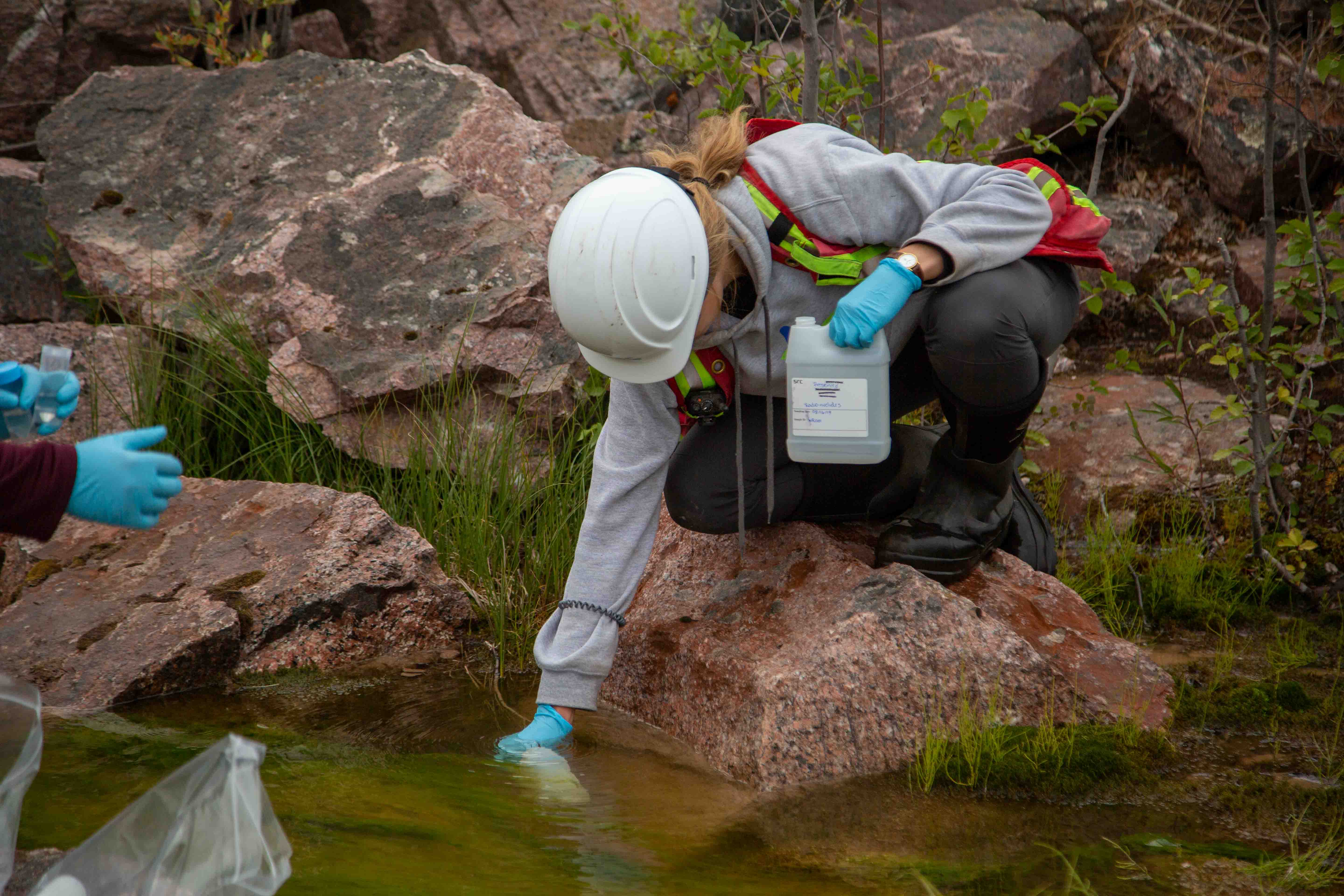
Water is a reactive and dynamic medium. When it comes to water sampling, this means that there are several factors that must be adhered to. Although a sample bottle filled with water may look quite stable, as soon as that sample is taken, subtle changes can begin to take place.
These changes occur for a variety of reasons including microbial action, interaction with air and the fact that dissolved chemicals are present as ions which inherently makes them more reactive.
For these reasons, it is important to fully understand and follow the sampling and preservation guidelines provided by the laboratory you are sending your sample to.
sampling requirements
At SRC Environmental Analytical Laboratories, we test on average about 12,000 water samples a year for clients across Saskatchewan. That’s a lot of water flowing through our doors, but it also means we’ve seen a lot of samples dropped off in a variety of conditions.
To help our clients, we’ve developed a quick Water Sampling Guide that has a list of parameters, bottle requirements, preservatives, hold times and special instructions.
Guidelines can vary from lab to lab as different techniques can be used for the same test and often, these techniques have different requirements for ensuring the stability of the sample. Be sure to check with the lab you are using to understand the sampling requirements for the tests you need.
preserving samples
One of the most common techniques to help preserve water samples is to use coolers and ice packs to keep the samples cool during transportation and shipment to the laboratory. Ice packs are preferable to using ice as melted ice can sometimes deteriorate sample labels and even the samples themselves. The purpose of refrigeration is to help stabilize the samples via reduced microbial activity and slower reaction times at lower temperatures.
When samples are not properly preserved, or are kept longer than recommended before analysis, results are flagged. How does a flag impact results? The actual impact of this flag on results is impossible to know and can range from no impact at all to a very significant impact. For this reason, it’s always best to adhere to the sampling requirements as closely as possible to ensure your sample is property preserved.
However, if a result is flagged and it’s impossible to resample or regenerate that result, the flagged result is still the best estimate available of the actual concentration.
at the lab
Choosing an accredited lab is another important aspect of any sampling you might want to do – from air to soil to water. Accreditation includes a thorough examination of a laboratory’s management and quality systems by an accreditation body, such as the Canadian Association of Laboratory Accreditation. This ensures the laboratory’s staff, equipment, processes and documentation meets internationally recognized standards and gives you, the client, assurance that your samples are in good hands.
SRC Environmental Analytical Laboratories supplies sampling containers and preservatives typically at no charge to clients to help ensure this critical aspect of sampling is followed. Learn more about the water quality tests we do at the lab, including lead, well water, greenhouses, municipal and industrial, and contact us to find out what tests you might need.
Dive In!
Check out a few more of our blog posts on water:
